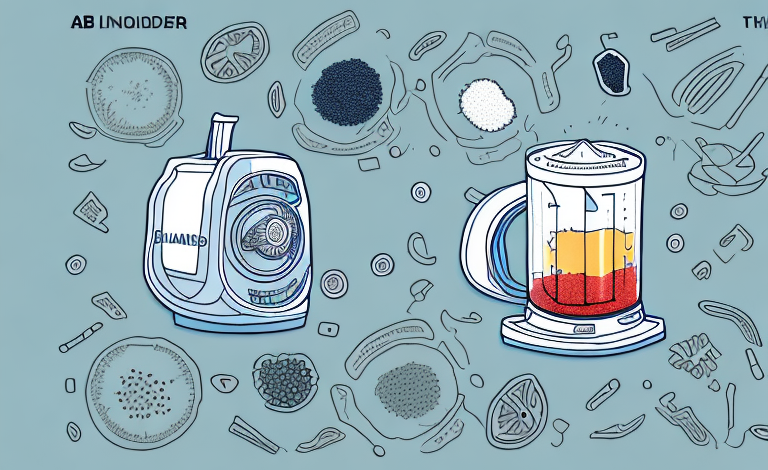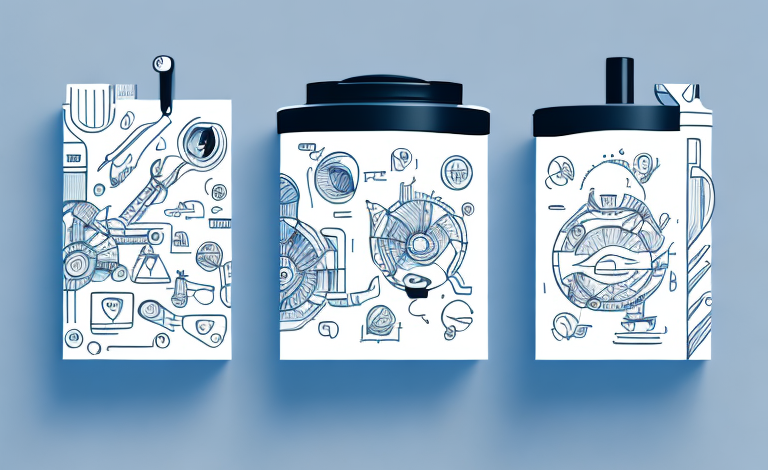Blenders are an essential kitchen appliance for many. Whether it’s for making smoothies, purees, or crushing ice, a blender can make food preparation quick and effortless. However, with so many blenders available, it can be challenging to determine the optimal power for your needs. In this article, we’ll explore the various factors that influence blender wattage and horsepower, and how to choose the right blender for your needs.
Understanding Blender Wattage and Horsepower: Which is More Important?
Blender wattage and horsepower are two terms that are frequently used to describe a blender’s power. However, these two terms are not interchangeable. Wattage refers to the amount of power the blender uses, while horsepower is a measure of its mechanical power output. While both of these measures are important, horsepower is a more accurate measure of a blender’s blending ability. A blender with a higher horsepower will be able to blend denser and tougher ingredients more efficiently than a blender with lower horsepower, even if they have the same wattage.
It’s important to note that a blender’s wattage and horsepower are not the only factors that determine its blending ability. The design of the blades and the shape of the blending jar also play a significant role. A blender with a well-designed blade system and a jar that creates a vortex can blend ingredients more efficiently, even if it has lower wattage or horsepower.
When choosing a blender, it’s important to consider your specific blending needs. If you plan on blending tough ingredients like nuts or ice frequently, a blender with higher horsepower may be a better choice. However, if you primarily plan on blending softer ingredients like fruits and vegetables, a blender with lower horsepower may be sufficient.
Choosing the Right Blender Power for Your Needs
The blender’s power you choose will depend on the tasks you want it to perform. If you plan on simply making smoothies and blending softer ingredients, a lower powered blender with around 400-600 watts is sufficient. If you plan on blending ice, frozen fruits or vegetables, a blender with a minimum of 700 watts is recommended. If you plan on frequent and heavy use of the blender, it’s best to invest in a high-powered blender with at least 1000 watts or more.
How to Determine the Optimal Blender Wattage for Smoothies and Juices
If you plan on making smoothies and juicing, consider the ingredients you will be using. Soft fruits and vegetables like bananas or leafy greens need a lower wattage around 400-600 watts, while hard fruit such as apples and carrots will require a blender with 700 watts or more.
It’s also important to consider the frequency of use when choosing the optimal blender wattage. If you plan on using your blender daily or for large batches, a higher wattage blender will be more efficient and durable. However, if you only plan on using your blender occasionally or for small batches, a lower wattage blender may suffice.
High-Powered Blenders vs. Low-Powered Blenders: Which is Best for You?
When considering high-powered vs. low-powered blenders, it’s important to think about what you’ll be using the blender for. High-powered blenders are more expensive but are more durable and have more blending power. If you plan on blending ice, nuts or seeds, investing in a high-powered blender may be a better long-term option. Low-powered blenders, on the other hand, are more budget-friendly, and suitable for simpler blending tasks that don’t require the high horsepower of a larger blender.
Another factor to consider when choosing between high-powered and low-powered blenders is the noise level. High-powered blenders tend to be louder due to their stronger motors, which may be a concern if you live in an apartment or have young children who nap during the day. Low-powered blenders, on the other hand, are generally quieter and may be a better option if noise is a concern.
It’s also worth noting that high-powered blenders often come with additional features, such as pre-programmed settings and variable speed controls. These features can make blending easier and more efficient, but they also add to the cost of the blender. If you’re on a tight budget and don’t need these extra features, a low-powered blender may be a better choice for you.
Making Sense of Blender Power Ratings: Decoding Wattage and RPMs
Blender power ratings can be confusing, with terms such as wattage and RPMs thrown about. Wattage refers to a blender’s power consumption, while RPMs refer to the blender’s blade speed. Higher RPMs mean that the blade spins faster, which means that the blender can blend ingredients faster, but it doesn’t necessarily mean the blender has more power.
It’s important to note that wattage and RPMs are not the only factors that determine a blender’s performance. The design of the blades, the shape of the jar, and the motor’s torque also play a significant role in how well a blender can blend ingredients. Additionally, some blenders may have variable speed settings, which can allow for more precise control over the blending process. When choosing a blender, it’s important to consider all of these factors in addition to wattage and RPMs to ensure that you select a blender that meets your specific blending needs.
The Pros and Cons of a High-Powered Blender
While high-powered blenders have many advantages, including faster blending times and the ability to blend tougher ingredients, there are also some drawbacks. High-powered blenders can be more expensive, louder, and heavier than lower-powered ones. They can also overheat if used incorrectly or if blending for too long. However, if you’re a frequent blender user and regularly blend tougher ingredients, the benefits of a high-powered blender may outweigh the drawbacks.
One of the major benefits of a high-powered blender is that it can make smoother and creamier smoothies and soups. The powerful motor can break down even the toughest ingredients, resulting in a smoother texture. Additionally, high-powered blenders can also be used to make nut butters, grind coffee beans, and even make homemade nut milk.
On the other hand, high-powered blenders can also be more difficult to clean due to their powerful blades and larger size. They may require disassembly and hand-washing, which can be time-consuming. Additionally, the high speed of the blades can cause ingredients to splatter and make a mess, which can be frustrating to clean up.
Is a 1000-Watt Blender Necessary? A Guide to Blender Power
A 1000-watt blender is not always necessary, but it can be beneficial for those who plan on heavy and frequent use of the blender or who want to blend tougher ingredients such as nuts, seeds, and ice. However, a 1000-watt blender may not be necessary for everyone and can be expensive, making it a better option for those who need the extra power.
When considering blender power, it’s important to also think about the size and capacity of the blender. A smaller blender with a lower wattage may be sufficient for those who only plan on making single servings or small batches. On the other hand, a larger blender with a higher wattage may be necessary for those who plan on making larger quantities or batches of smoothies, soups, or sauces. It’s important to assess your own needs and usage habits before investing in a blender with a higher wattage.
How Powerful Should Your Blender Be for Crushing Ice and Frozen Fruits?
If you plan on crushing ice and frozen fruits, a blender with at least 700 watts is recommended. This will ensure that the blender can handle the added strain that comes with blending hard ingredients. A high-powered blender with at least 1000 watts will be even more efficient and can handle larger quantities of ice and frozen fruits.
It’s important to note that the blade design of the blender also plays a role in its ability to crush ice and frozen fruits. Look for blenders with strong, durable blades that are specifically designed for crushing ice. Additionally, some blenders come with pre-programmed settings for crushing ice and frozen fruits, which can make the process even easier and more efficient.
Can a Low-Powered Blender Do the Job? A Closer Look at Wattage and Performance
While low-powered blenders may not be as efficient as high-powered ones when it comes to tough ingredients like ice and frozen fruits, they can still get the job done. Low-powered blenders can be ideal for those who only plan to use the blender for simple blends, such as smoothies or purees. However, it’s crucial to keep in mind that the blender may struggle to blend tougher ingredients, which can lead to a less smooth consistency.
In conclusion, the optimal power of a blender depends on the tasks you plan on using it for, the ingredients you’ll be blending, and your budget. Consider investing in a higher-powered blender if you plan on blending tougher ingredients or frequent use. However, a low-powered blender can still be suitable for simple blends, such as smoothies or purees. Regardless of your choice, understanding the differences between blender wattage and horsepower can help you make an informed decision and ensure your blender can handle your blending needs.
It’s also important to note that low-powered blenders tend to be more affordable than high-powered ones. If you’re on a tight budget, a low-powered blender may be the best option for you. Additionally, low-powered blenders are often smaller and more compact, making them a great choice for those with limited counter space or who want a blender that’s easy to store. However, if you plan on using your blender frequently or for more challenging tasks, investing in a higher-powered blender may be worth the extra cost in the long run.



